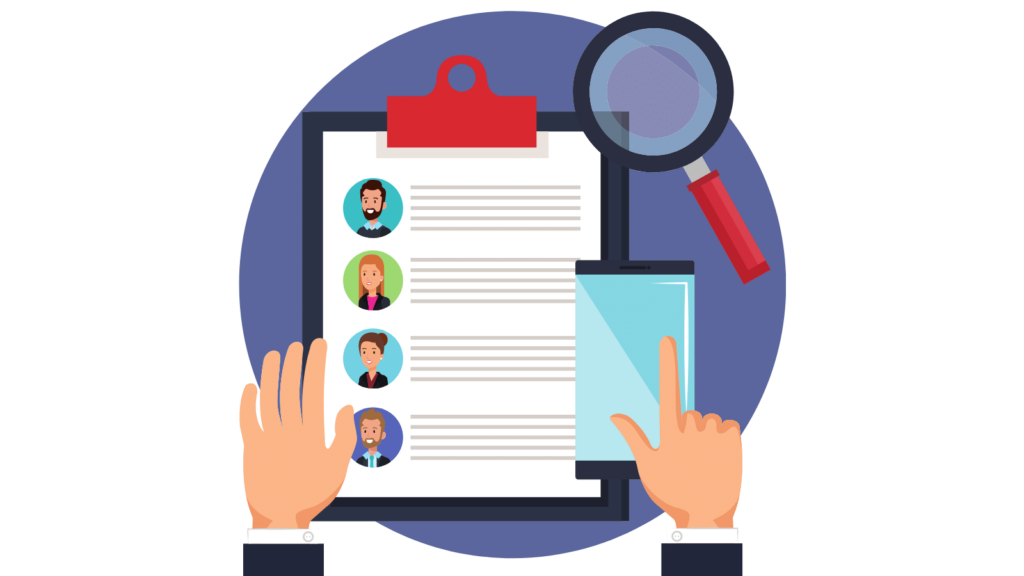When it comes to creating an HR strategy that promotes a culture of success and productivity in any business or organisation, designing the best employee experience is key. As employers strive to ensure their staff are engaged and enabled, understanding the benefits of having a strong employee experience has never been more important.
According to Gallup, businesses with high employee engagement and a positive employee experience have 81% fewer cases of absenteeism than those with a poor experience. The Gallup survey also shows that profitability in sales increases by 21% when employees feel engaged at work.
In this article, we take a look at how to design the best experience for your HR strategy, starting with the basic essential question, “What makes a good employee experience?”
What makes a good employee experience?
A good employee experience is engaging, memorable, and motivating. It should be designed to foster a sense of connection between the employee and the organisation and to promote a sense of pride and ownership in the work being done.
The best employee experiences are those that are tailored to the specific needs and interests of the employees and that take into account the unique culture of the organisation.
Elements that are essential to creating a good employee experience HR Strategy
Culture
Your company’s culture is a key influence on the experience of your employees. Having common core values makes your employees feel seen and heard. These need to be reflected in how you run your daily activities and should be made common knowledge to all employees.
Having a culture of recognition and appraisal also contributes to a good experience. You’re also likely to deal with fewer incidences of absenteeism and overall improved work quality.
The employee experience improves greatly when there is a sense of belonging and community. You can do this by bringing your employees together and showing them that their contribution matters.
Communication
Clear communication from the top helps employees have a clear understanding of what is expected of them. By being clear on the objectives and vision of the company, you give your employees a sense of direction.
Your employees are going to enjoy the work environment more when they feel they are also heard. Also, use the appropriate communication channels, as this also conveys respect to your employees.
Technology
Technology is a vital enabler of a positive employee experience. While you want to get the most out of your technological investments, you also need to be intentional about them.
Consider what works best for your team. Apart from making life easier for the employees, it will also increase the adoption rate and productivity.
You should also maintain reliable and consistent access to the systems and information. This will help your employees get what they need when they need it.
Why the employee experience is embedded in your HR strategy
An HR strategy is a framework that helps an organisation solve challenges using people-centric approaches. By having a clear strategy, you maximise the potential of your organisation’s human capital. This contributes to a positive employee experience as it is keen on operating from an employee standpoint and not a transactional one. Helping your business gain more insight into the needs, culture, and ideas of your employees.
A good HR strategy cultivates a positive experience by:
1. Promoting a supportive and collaborative workspace
As we have mentioned, showing your employees that you value them and giving them a sense of community makes them more invested in their work.
The HR strategy promotes a positive experience by:
- Encouraging innovation and ideas
- Promoting inter-departmental collaborations for more interactions
- Regularly checking in on employees
- Giving positive feedback
- Ensuring a comfortable workspace and environment
- Solving conflicts as they arise
We talk more about increased employee engagement here.
2. Leveraging on employee experience management
Employee experience management is necessary during the entire employment journey, from onboarding to exit. Thanks to technology, there is a variety of software available that can help the HR team know what to do for the best employee experience. Through these, you can get insights and metrics that can be useful in knowing the best approach to take with your employees.
Through proper management, you’ll be able to uncover areas of dissatisfaction and burnout. You’ll also have higher retention rates because your employees won’t want to leave when they are having a good experience.
The management of the employee experience includes providing them with the right tools. With these, they’ll serve your customers better, which helps build a positive client relationship. According to Gallup, companies with good employee engagement had higher customer loyalty by 10%.

Where to start with your HR strategy build
Here are a few key areas to start with as you begin to build your employee experience strategy.
1. Define your company’s goals and values
How do you want your employees to feel when they come to work? What kind of work environment do you want to create?
With a clear idea of your goals, you can start to design the best employee experience for your business.
2. Understand the needs and wants of your employees
What motivates them and makes them feel valued? What do they need to be productive and happy at work?
Once you understand what your employees need, you can start to create an employee experience that meets their needs.
3. Create an implementation plan
What changes will you need to make to your workplace? How will you train your managers and employees on the new experience?
By creating a plan, you can ensure that your employee experience strategy is implemented smoothly and effectively.
What to include in your HR strategy
Well-being technology
The use of well-being technology is one key thing to include when building an employee experience strategy for your business. Well-being technology is a form of technology that ensures the digital wellness of the employee.
Digital wellness goes beyond the ability of an employee to accomplish their tasks through the use of technology. It specifically ensures an employee’s mental and physical health is okay.
[image – Kind Mind graphic. Something that shows our tech in work]
Kind Mind is just one example of well-being technology. The platform uses a data-driven approach to help you better understand your employees and improve their happiness, health, and success.
There are numerous other things you can include in your employee experience strategy. Here are a few questions to guide you in your search for what to include.
- Do they need more training or development opportunities?
- Are they looking for more flexible work arrangements?
- Do they want to feel like they are part of a team and contribute to the company’s success?
- How can we provide opportunities for employees to grow and develop?
- Do we promote collaboration and open communication?
You can come up with as many questions as you wish as long as they are focused on improving your employees’ experience.
How to measure your employee experience
Key Performance Indicators (KPIs) help you assess whether or not you’re headed in the right direction. They are measurable and specific.
KPIs you can use include:
- Employee satisfaction: you can use surveys to query employees about their job satisfaction level
- Employee wellness: employee health is a good indicator of their experience. Stress and lifestyle-related illnesses can be a sign of a poor working environment
- Productivity levels: by measuring the hourly, daily, or weekly production rate of your employees, you’ll get insight if you’re on the right track or not.
- Retention rates: a positive or gradually improving retention rate points to employees having a good experience.
- Employee engagement: you can have a system in place that helps you monitor your team’s engagement levels.
The use of well-being technology can be a great way to measure employee wellness and satisfaction. You can get health-risk assessments of your employees and empower them to set health goals. You can even measure the stress levels of your employees and help them manage the stress.
The use of well-being technology in measuring employee satisfaction has come a long way. However, current measurements are only empirical. Nonetheless, with the major advancements in AI combined with the numerous studies on the use of well-being tech, there will be a seismic shift so that well-being tech can give better measurements in the near future. This is something that we, at Kind Mind, are laser-focused on.
The Bottom Line: Trust the HR Strategy process
Creating the ideal employee experience in your HR strategy is going to take time. Be patient and consistent. The benefits you’ll realise from it will affirm that it was all worth it.
Good luck.






